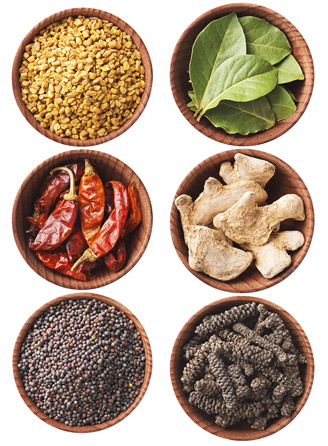What is a Flavour?
The perception of flavour is made up of a combination of smell, taste and texture.
What Are Flavours Made Of?
Flavour Chemicals – Aroma Compounds
- Over 7,000 volatile compounds have been identified in foods
- Approximately 1,500 of these volatile compounds are used in the creation of flavourings – Nature Identical or Natural
- Approximately 400 materials not identified in foods are also used in flavourings – Artificial
- Over 4000 FEMA GRAS approved flavouring ingredients
- There are many different flavour categories that cover the range of foods and beverages, e.g. fruit flavours, sweet brown flavours, spice/herbs, etc.
- There are many regulatory considerations that need to be borne in mind when developing flavours for different regions and countries, for example, natural, organic, non-GMO, no diacetyl, no-PHO, kosher, halal, etc.

|
Get KHNI articles delivered to your inbox
|

Factors Influencing Taste And Flavour Sensations
Despite the important role that taste buds play in recognising flavours, they do not work alone in providing the experience of taste.
- The amount of naturally occurring salt in saliva varies; individuals with less saliva can better taste the saltiness of certain foods than others
- The smell and texture of foods are also important contributing factors to how people perceive a food to taste and whether or not they like it
- Since smell is much more sensitive to odours than taste is to flavours, people often first experience the flavour of a food by its odour
- Food in the mouth produces an odour that reaches the nose through the nasopharynx
- People with congestion often experience a diminished ability to taste; their taste buds, are working fine; it’s the lack of smell that hinders the brain’s ability to process flavour
- Texture and temperature of food also influences how it tastes. For example, some people would not think of drinking cold coffee, while others will not eat pears because of a dislike for the fruit’s gritty texture
- Taste preferences, threshold and discrimination decrease with age due to degeneration of taste buds
- Individuals who are overweight or obese tend to have less sensitive taste buds
- Smoking tends to decrease the ability to recognise certain tastes
- Food/meal composition can alter taste perceptions and can have an impact post-ingestion on taste preferences e.g. hot (temperature) or spicy foods tend to alter taste perceptions
- Hunger impacts how a food tastes; sweetness and saltiness perceptions tend to increase with hunger
- Pregnancy alters taste perceptions and preferences
- Malnourished individuals, those undergoing therapeutic treatments such as chemotherapy, those on prescription medications, etc. experience alerted taste sensitivity, preferences and perception
- Memory of certain foods, colour, environment, expectations, etc. also influence an individual’s taste preferences and perceptions
-
References
You are what you choose to eat: factors influencing young adults’ food selection behaviour. Hebden L, Chan HN, Louie JC, Rangan A, Allman-Farinelli M. J Hum Nutr Diet. 2015 Apr 20. doi: 10.1111/jhn.12312. [Epub ahead of print]
Impacts of in utero and early infant taste experiences on later taste acceptance: a systematic review. Nehring I, Kostka T, von Kries R, Rehfuess EA. J Nutr. 2015 Jun;145(6):1271-9. doi: 10.3945/jn.114.203976. Epub 2015 Apr 15.
Factors affecting food choices of older adults from high and low socioeconomic groups: a discrete choice experiment. Kamphuis CB, de Bekker-Grob EW, van Lenthe FJ.
Am J Clin Nutr. 2015 Apr;101(4):768-74. doi: 10.3945/ajcn.114.096776. Epub 2015 Jan 28.
Taste preferences and body weight changes in an obesity-prone population. Salbe AD, DelParigi A, Pratley RE, Drewnowski A, Tataranni PA. Am J Clin Nutr. 2004 Mar;79(3):372-8.
Impact of genetic and environmental determinants of taste with food preferences in older adults. Navarro-Allende A, Khataan N, El-Sohemy A. J Nutr Elder. 2008;27(3-4):267-76. Review.
The chemical senses and nutrition in older adults. Murphy C. J Nutr Elder. 2008;27(3-4):247-65. Review.
Eating Behaviours
- Eating is driven by reward and continues until the reward has been obtained. Well-tasting/high sensory quality foods provide more reward per energy unit than bland foods, supporting the hypothesis that quality can replace quantity.Monotonous diets contribute to stronger food cravings of liked foods, that are often energy-dense, contributing to larger energy intake.
Studies show that:
- Eating a higher reward food does not necessarily contribute to overeating
- Eating what you like induces a stronger decline in wanting to eat
- Limiting intake of liked foods in order to limit overall intake may not be appropriate
- Individuals will tend to eat more of a food, the more they want it
-
References
Moller. Taste and appetite. Flavor. 2015; 4:4.



